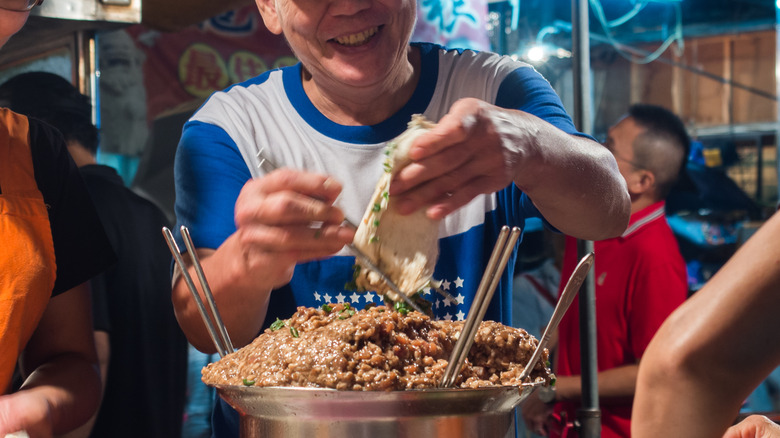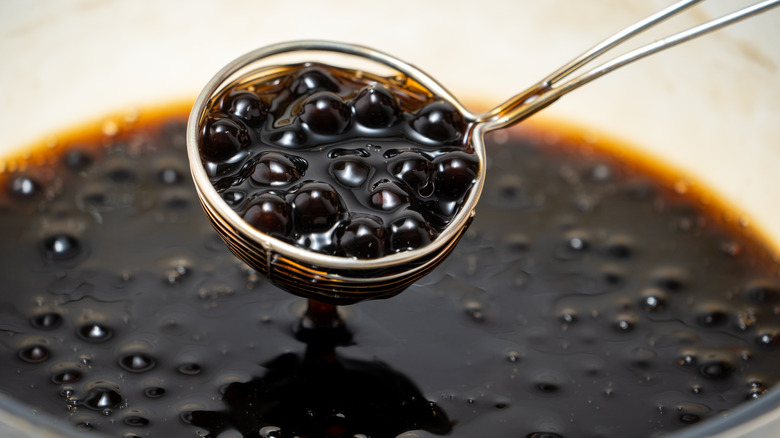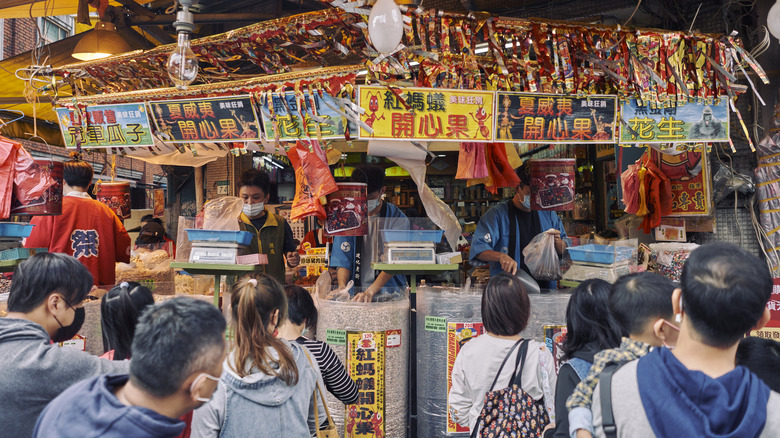What Is Q, And Why Is It Essential To Taiwanese Cooking?
No matter where you go in this great big food-filled world, one thing remains steadfastly the same: Every region has a culinary quirk that its people consider crucial to the local identity. You could even consider that certain foods should only be eaten in one place, typically the place of origin, to get the best possible version. The Japanese cherish their umami, a savory taste found in broths, meat, and soy sauce. Italian chefs strive to boil their pasta to a perfect firmness called al dente. In New York City, people unwrap their bagels with a discerning eye, and in France, a steak isn't considered edible unless it's served nearly uncooked.
In Taiwan, however, people seek out an elusive texture known only as "Q." But what is Q? What does Q taste like? What does it feel like in the mouth? And why in a region where Chinese characters dominate the printed landscape has a single letter from the Latin alphabet come to represent the defining culinary creation of the region?
Q is a texture not a flavor
The best way for people who aren't familiar with Q is to point them towards what makes the trending bubble tea so unique. Those tapioca pearls at the bottom of the tea are called bobas. When you consider how they feel in your mouth; soft, yet firm at the same time, slick, springy, and chewy, all of that comprises the essence of Q (via Huffington Post).
Aside from bubble tea's bobas, there are many other kinds of foods that share the consistency of Q. Fish balls and sesame donuts, sweet potato balls and milk curds, and certain types of noodles. Q foods can be sweet and savory and can be an entree, a dessert, or a snack. There are even different levels of Q — and they are determined by the texture of it (via The New York Times). The texture that resembles that of a gummy bear is the lowest form of Q, while Taiwanese pork meatballs, which have a texture closest to Silly Putty, are on the higher end of Q and are referred to as QQ (via Roads & Kingdoms).
You see, Q is not an actual food or particular ingredient, it's simply a texture that is highly regarded in the Taiwanese culture (via AmCham Taiwan).
Why the letter Q?
Once you taste anything considered Q, you might have a better understanding of why it is likely an element of some Taiwanese dishes you need to try. Of course, not everyone shares the same palate, but as popular as this texture is, it may be worth your time.
If you ever find yourself in Taiwan, you simply have to look for the letter Q on any food stand's sign and you'll be headed in the right direction. But why is it called Q? It turns out, the origin of how the symbol "Q" came to stand for the texture is not so clear.
A prevailing theory is that it's a simplified version of the word k'iu, which in the Taiwanese Hokkien language describes the texture of Q. Another phrase to describe the texture is "tan ya," which is, aptly, a translation of the phrase "rebound teeth." Exactly how these local words made the jump to the character "Q" is entirely unknown, but as there isn't a character for k'iu in the Chinese alphabet, it seems that Q is merely a phonetic adaptation of the word (via Roads & Kingdoms).


